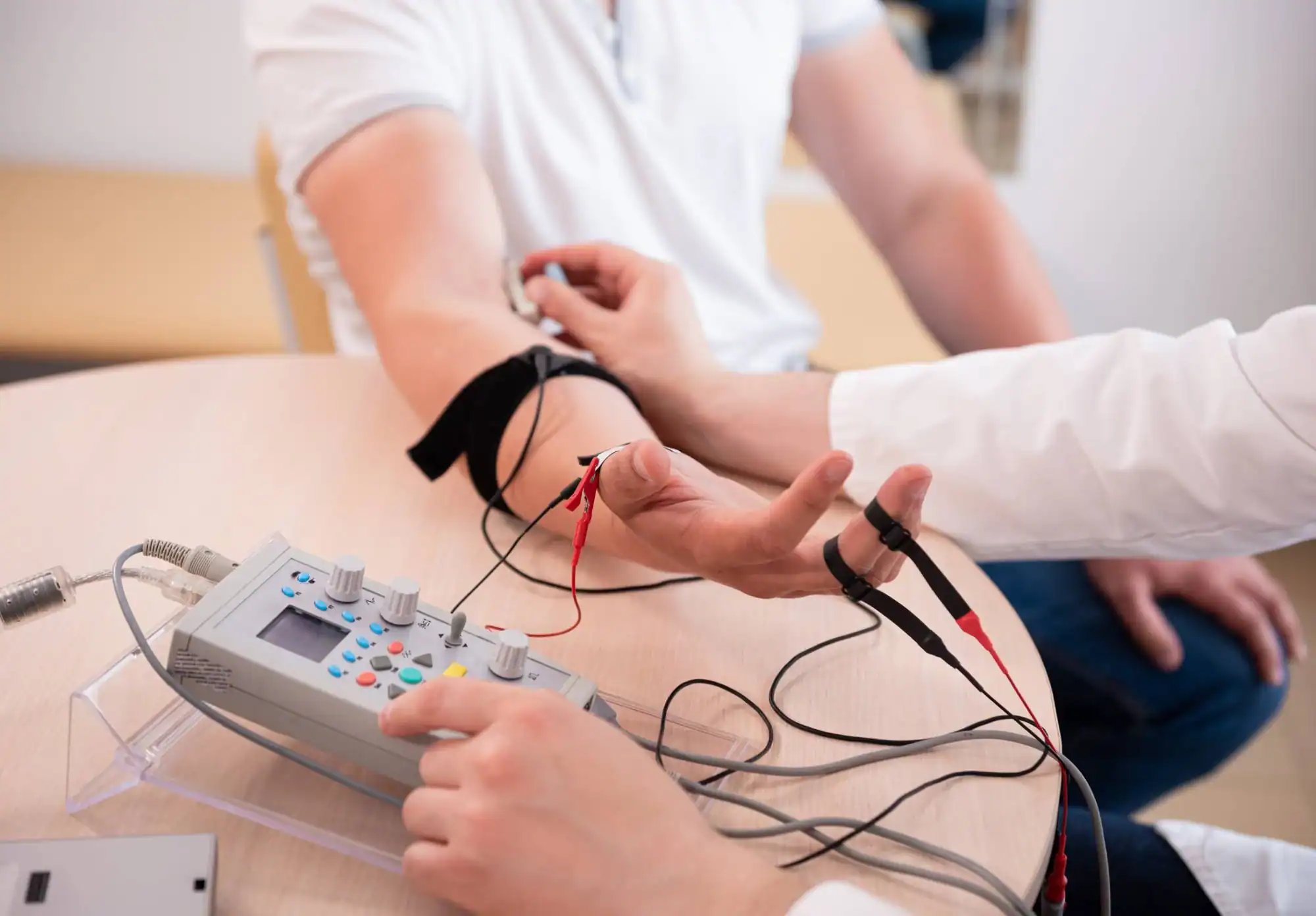Advanced electromyography testing that pinpoints exactly what’s causing your muscle weakness, numbness, or tingling.
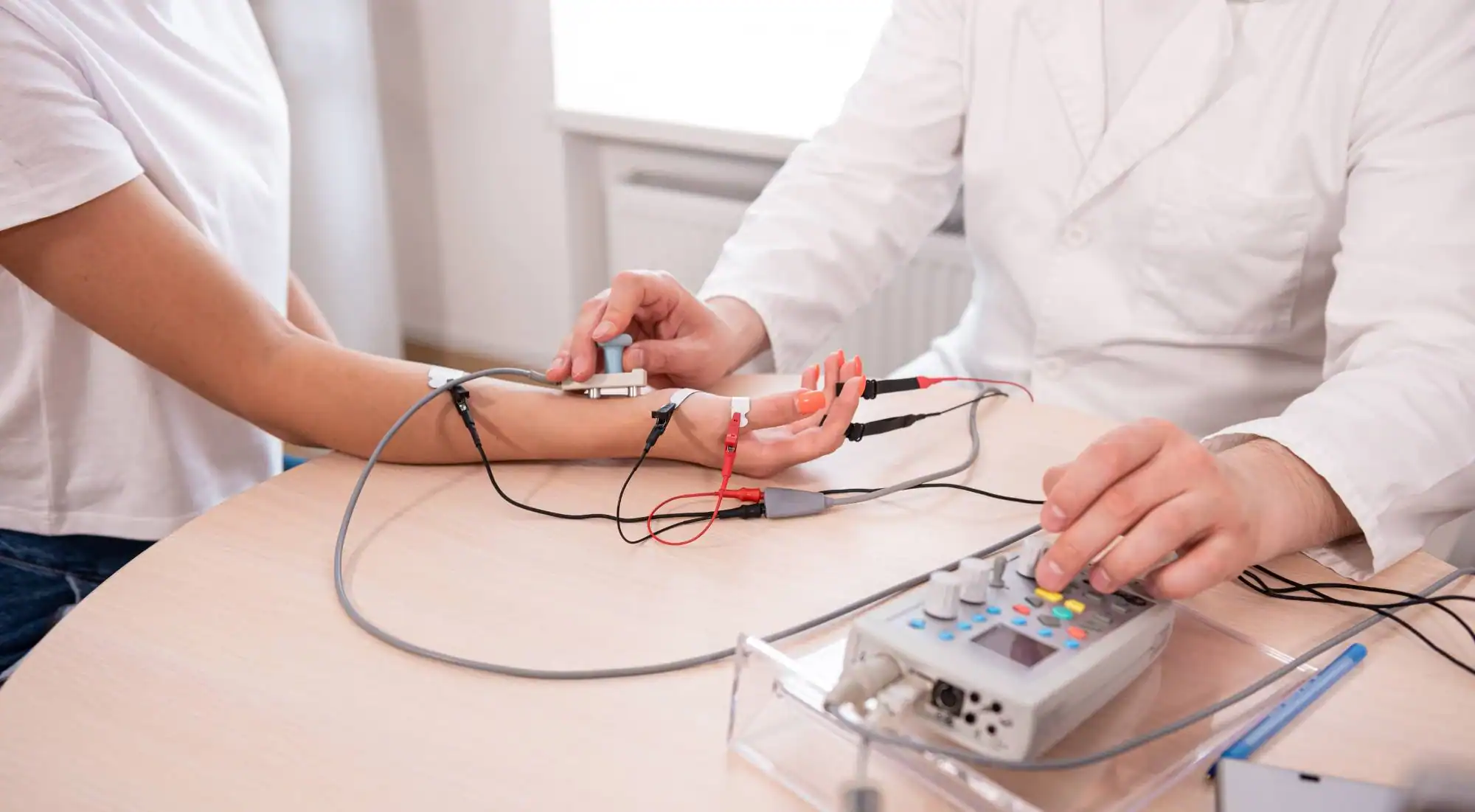
Reviews
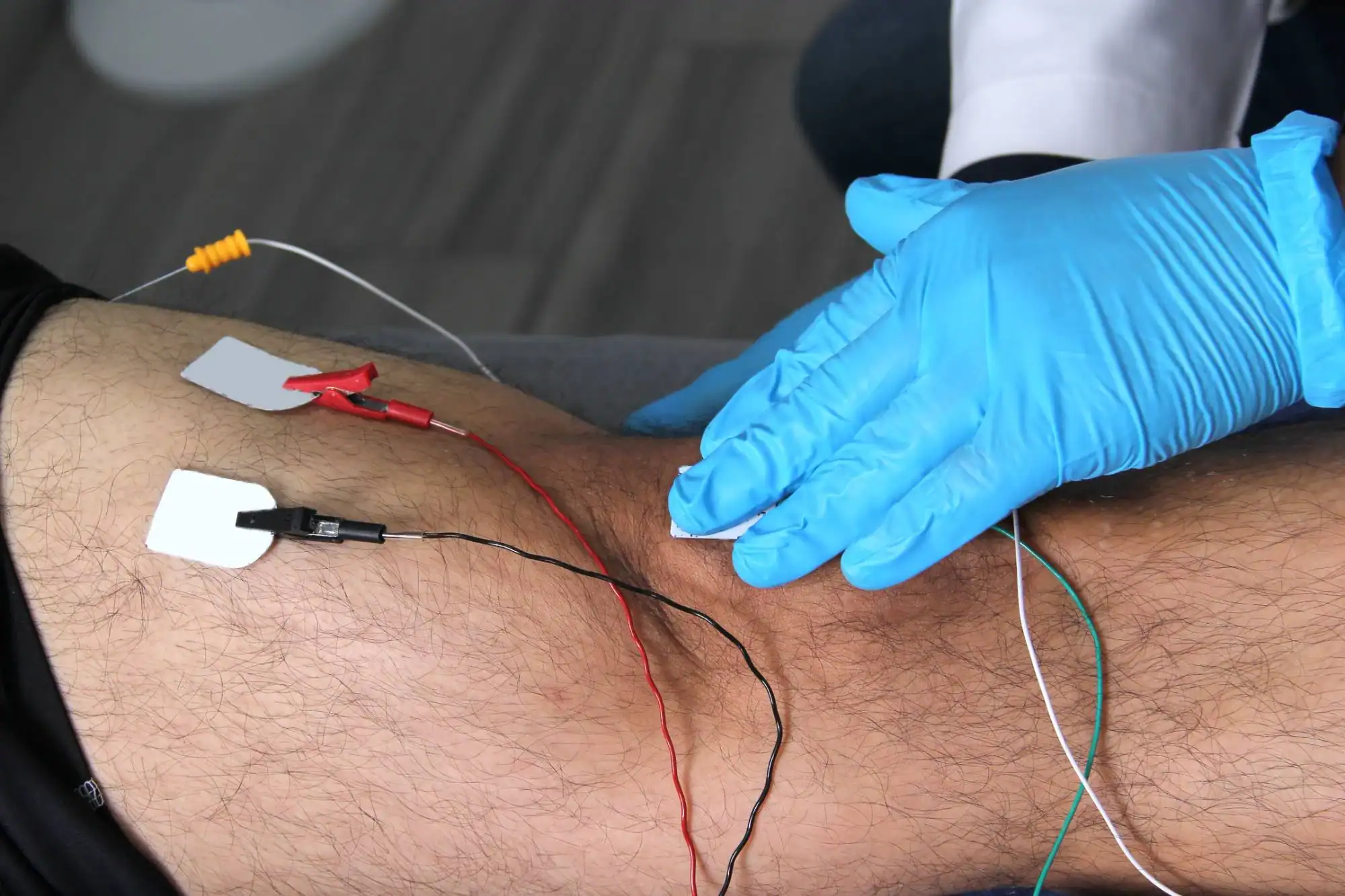
You’ve been dealing with unexplained muscle weakness, strange tingling, or numbness that’s affecting your daily life. Maybe your fingers feel clumsy at work, or your leg feels weak when you walk. You need answers, not more guessing.
EMG testing gives you those answers. This diagnostic procedure measures the electrical activity in your muscles and nerves, revealing exactly where the problem lies. Whether it’s carpal tunnel syndrome, a pinched nerve, diabetic neuropathy, or something else entirely, you’ll know for certain.
Once you have a clear diagnosis, you can move forward with the right treatment plan. No more wondering if your symptoms are serious. No more trying treatments that don’t address the real issue. Just clear information that leads to effective solutions.
NY Spine Medicine has been serving the Staten Island community with comprehensive spine and nerve care for years. Our team understands that when you’re dealing with nerve problems, you want answers from doctors who’ve seen it all before.
We focus specifically on spine and nerve conditions, which means we encounter cases like yours regularly. We know what to look for, how to interpret complex test results, and how to explain everything in terms that make sense to you.
Located right here in Graniteville, you don’t need to travel into Manhattan for quality EMG testing. You can get the same level of expertise and advanced diagnostic equipment close to home.
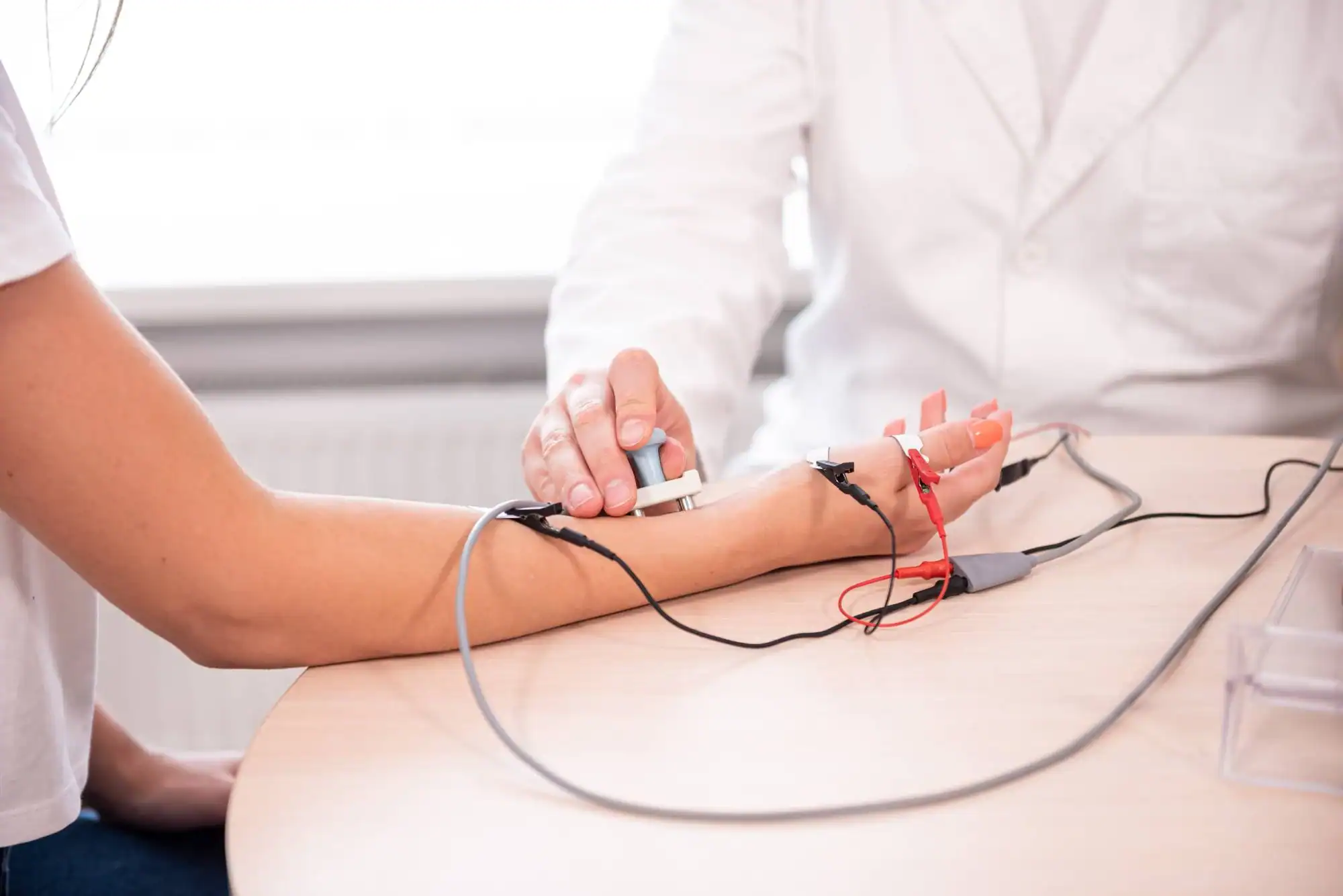
Your EMG test actually involves two parts: nerve conduction studies and electromyography. Both are performed during the same appointment to give a complete picture of your nerve and muscle function.
First, the nerve conduction study uses small electrical pulses to test how well your nerves transmit signals. You’ll feel brief, mild shocks as electrodes placed on your skin measure nerve response speed and strength. This part identifies nerve damage or compression.
Next, the electromyography portion uses thin needle electrodes inserted into specific muscles to measure electrical activity. You’ll be asked to relax certain muscles, then contract them gently. This reveals whether muscle weakness stems from the muscle itself or nerve problems.
The entire process typically takes 30-60 minutes depending on how many areas need testing. Most patients find it tolerable, though you may experience some discomfort during needle insertion. Results are available immediately, and your doctor will explain what they mean for your condition and treatment options.
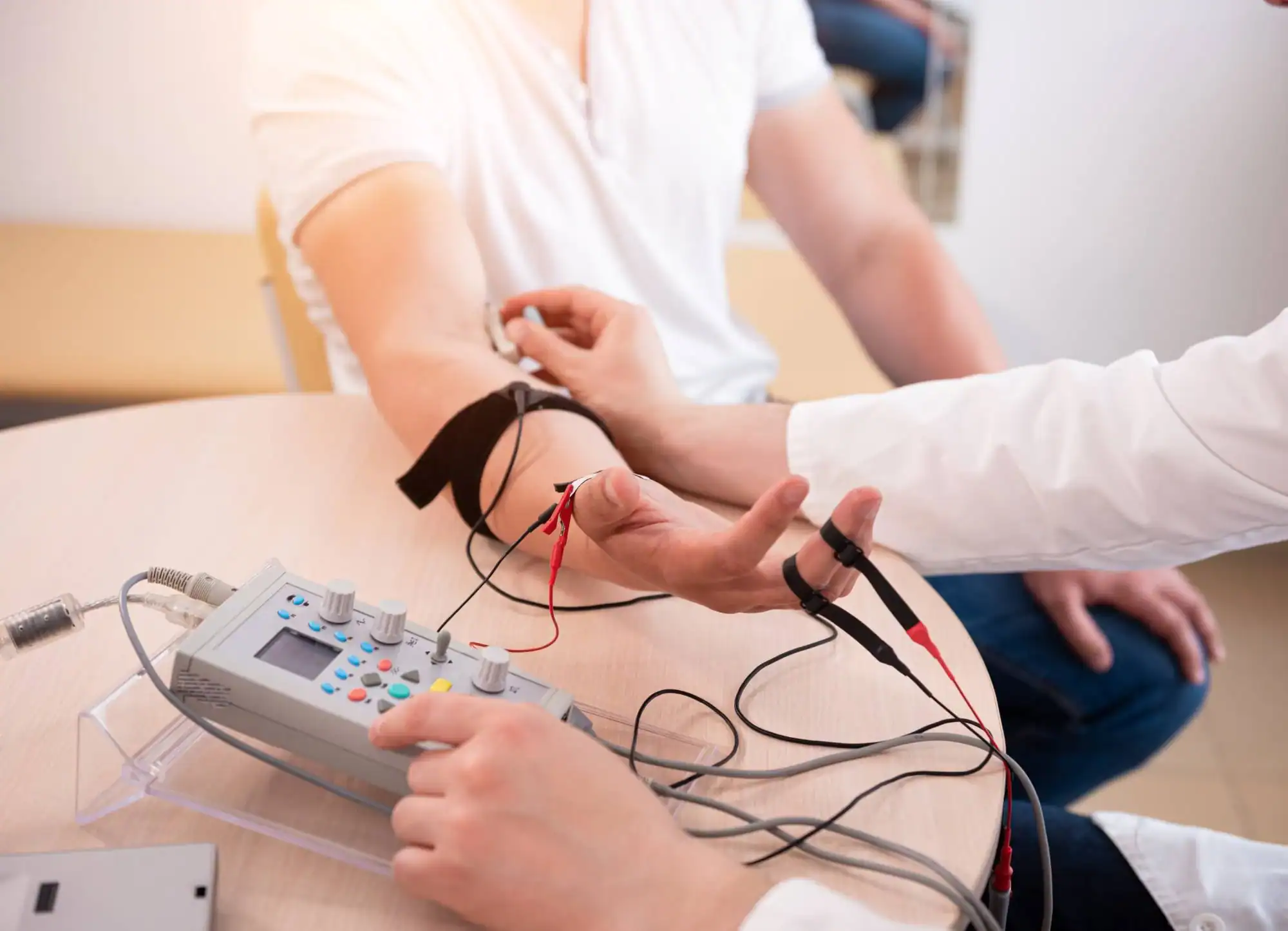
Ready to get started?
Your EMG testing appointment includes both nerve conduction studies and electromyography testing to evaluate different aspects of your neuromuscular system. This comprehensive approach ensures nothing gets missed that could affect your diagnosis.
The testing can identify conditions like carpal tunnel syndrome, ulnar neuropathy, radiculopathy from herniated discs, diabetic neuropathy, muscle diseases, and various other nerve disorders. You’ll receive detailed results that clearly show nerve conduction speeds, muscle response patterns, and any abnormalities.
After testing, you’ll meet with your doctor to review results and discuss what they mean for your specific situation. You’ll leave with a clear understanding of your diagnosis and recommended next steps, whether that’s physical therapy, medication, injections, or other treatments. Your results are also shared with your referring physician to ensure coordinated care.
